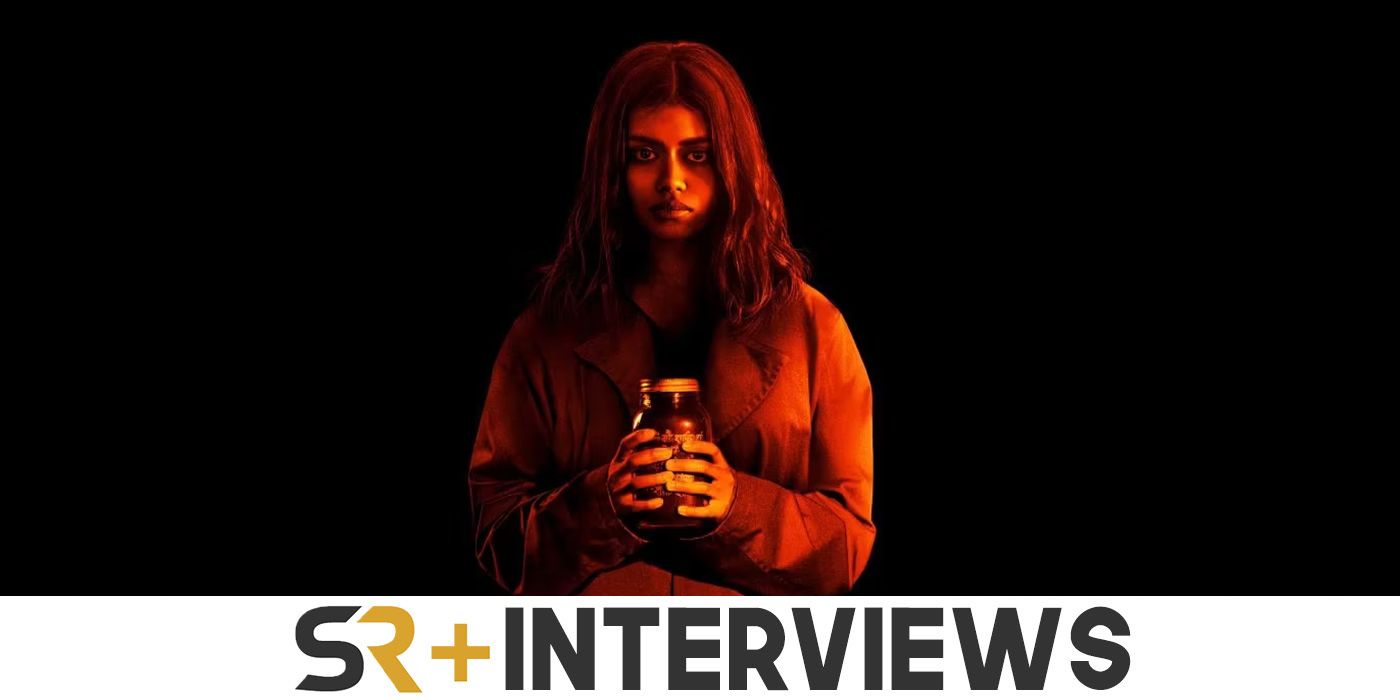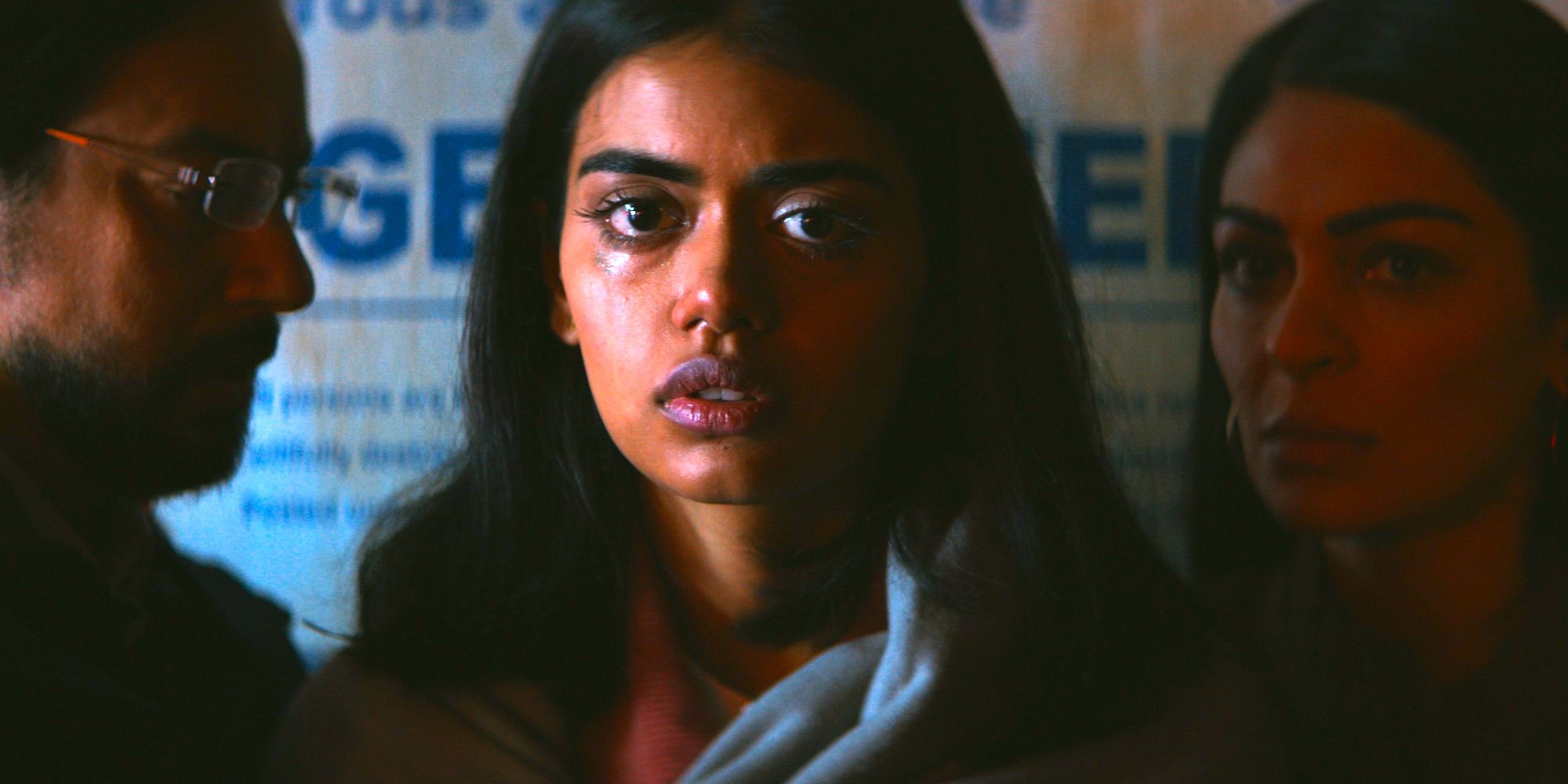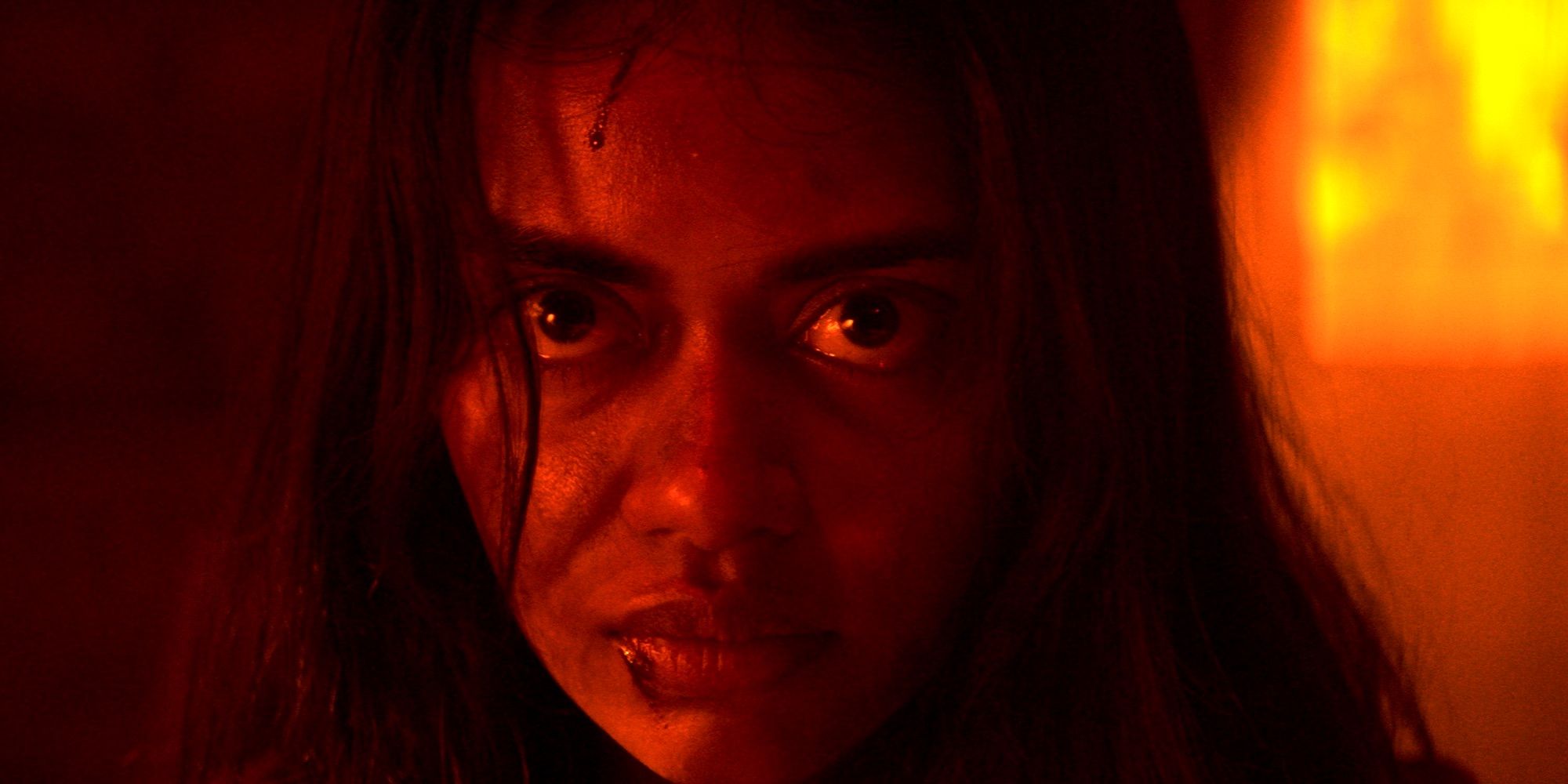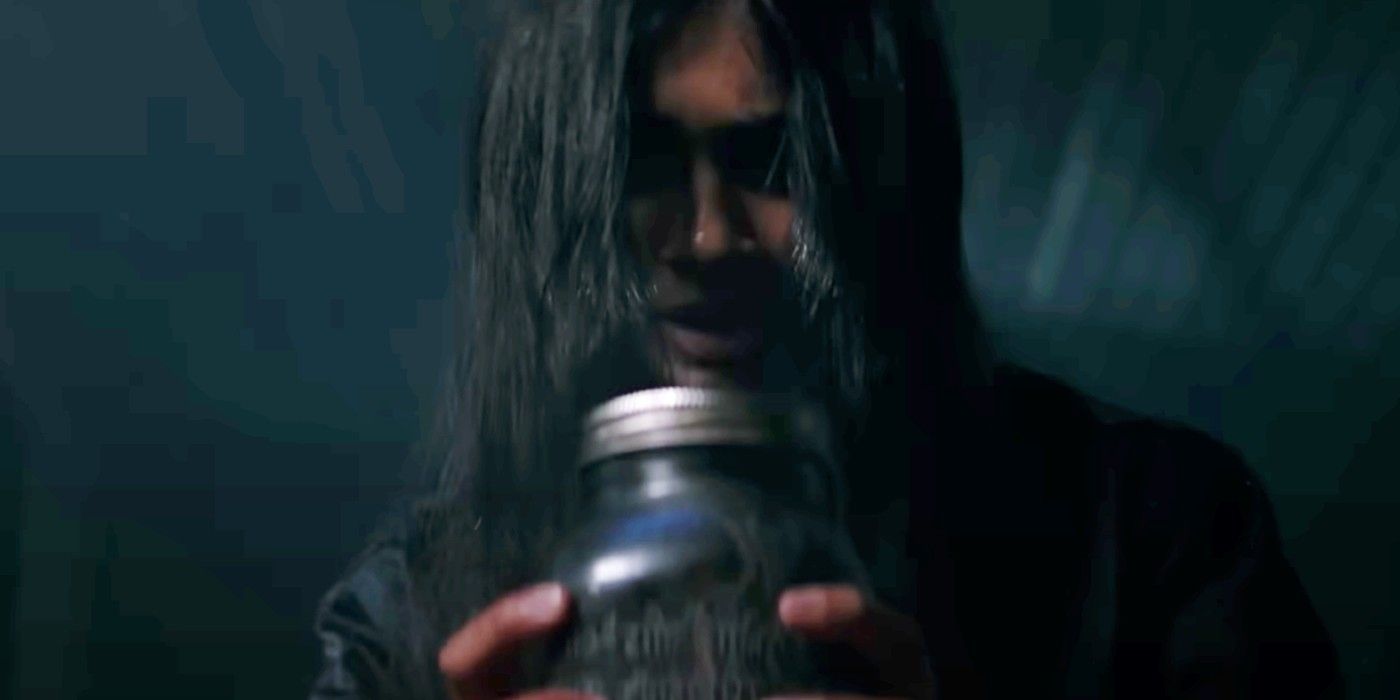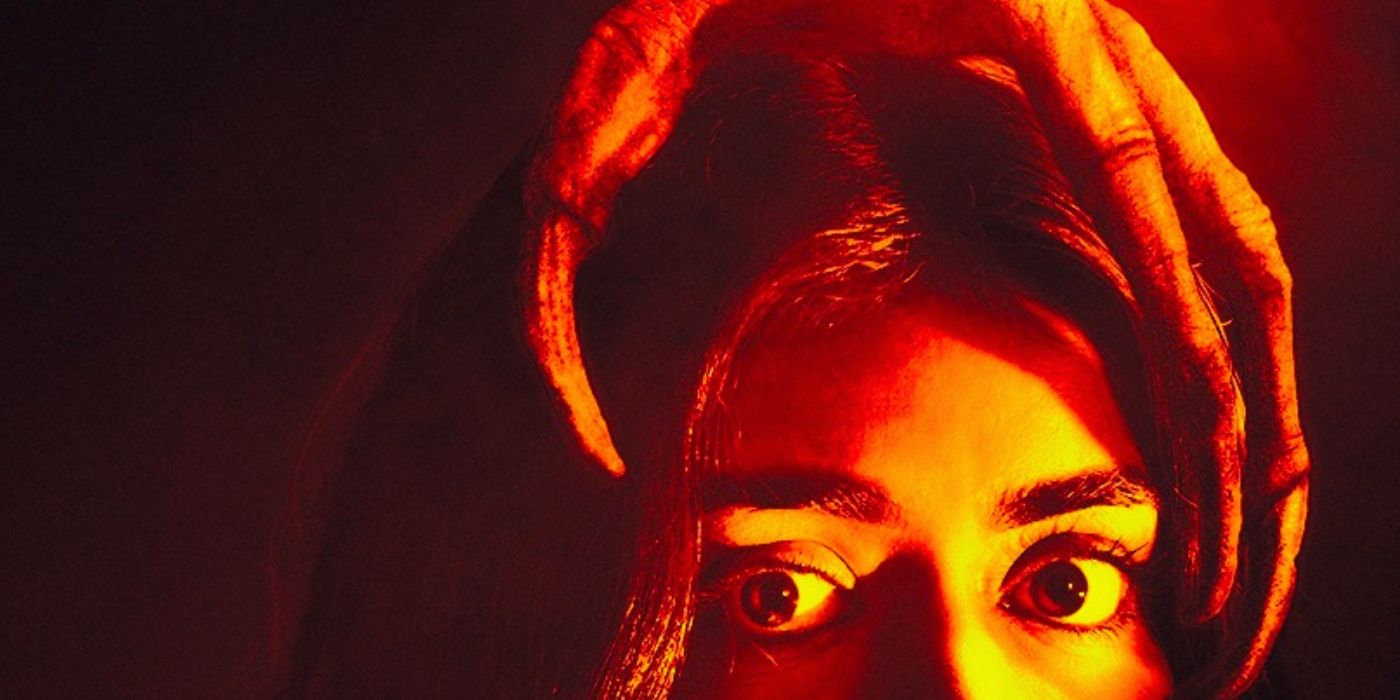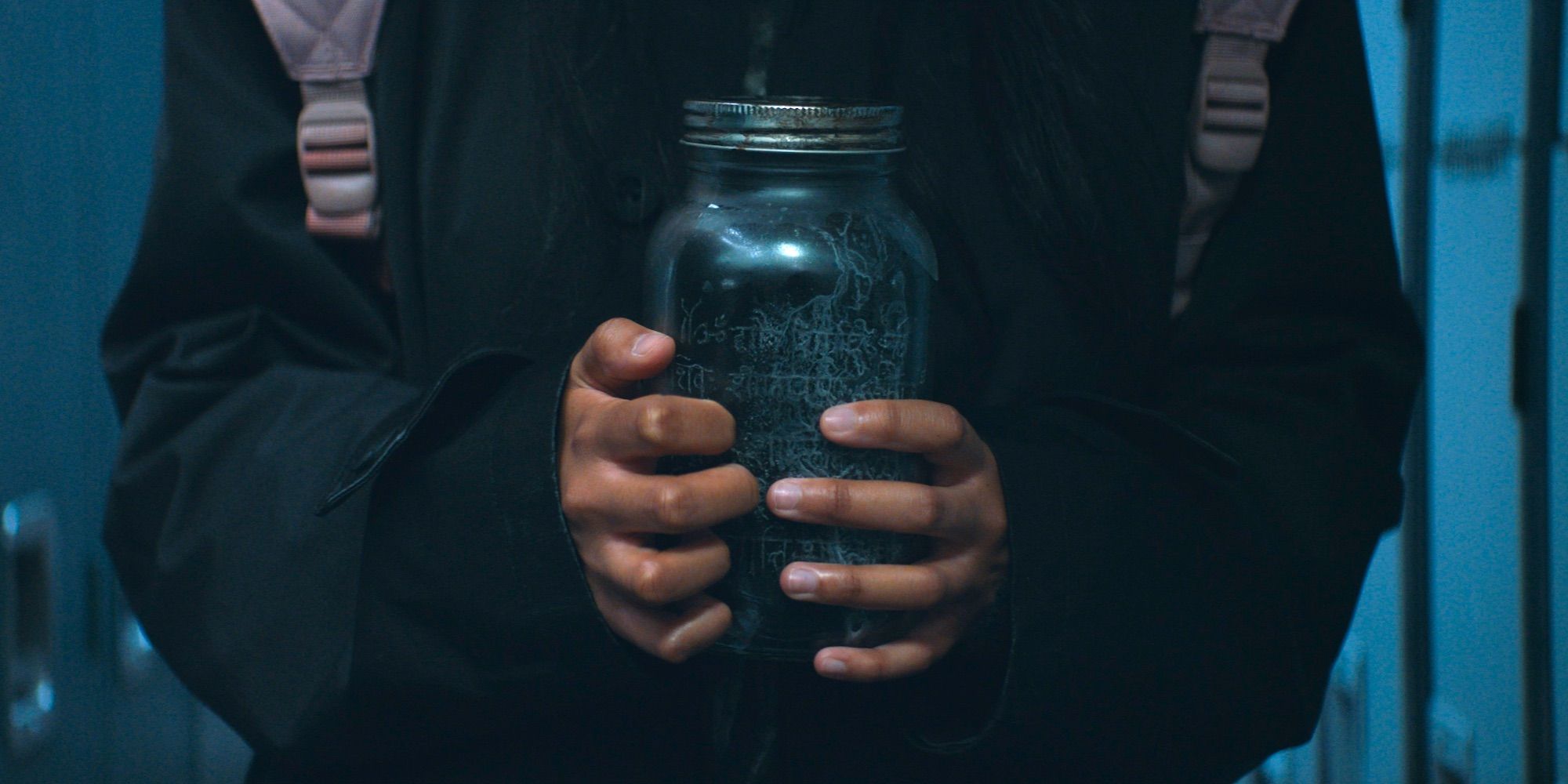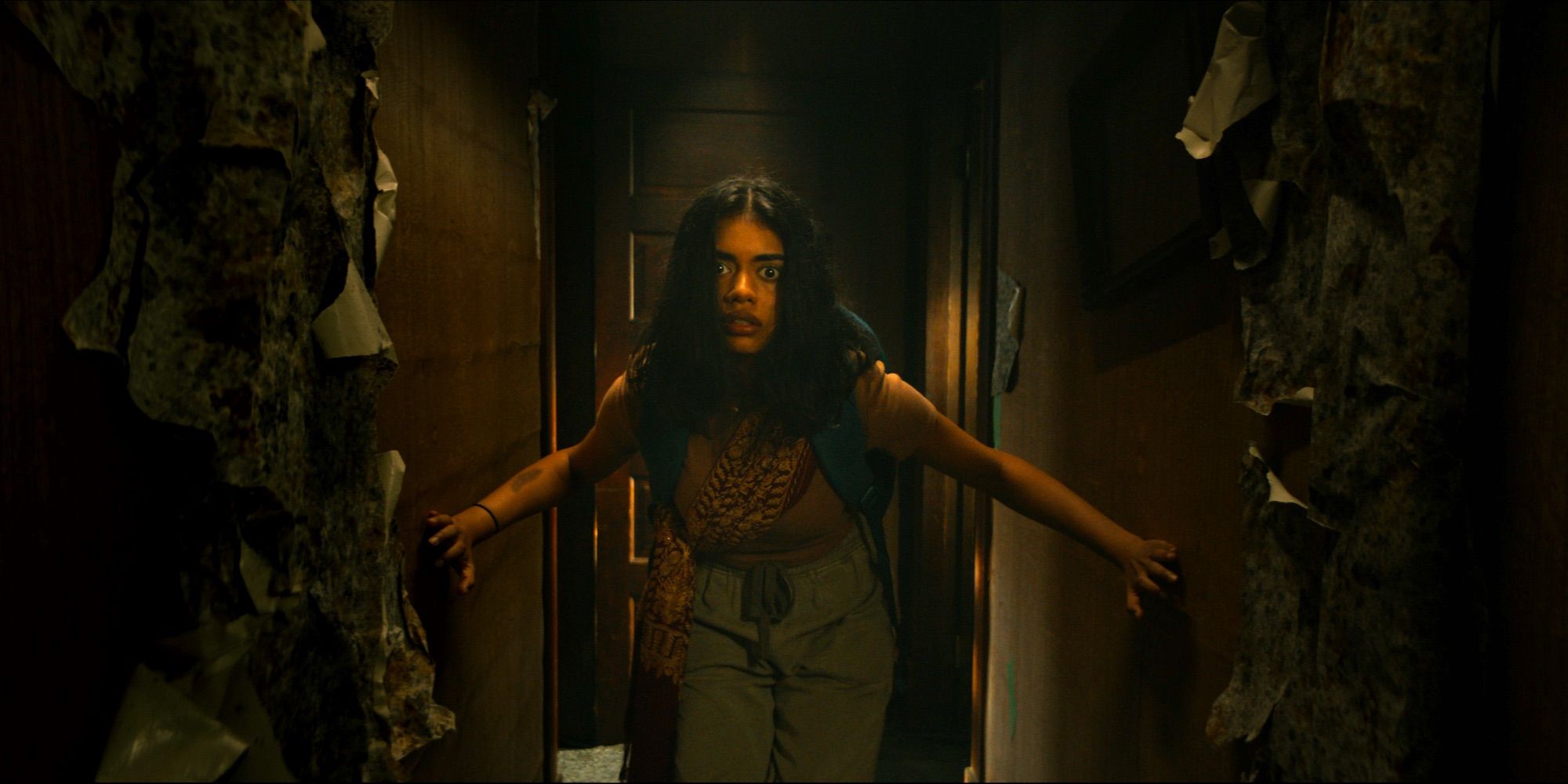Summary
High school is tough enough for anybody, but when you throw in a complex story of immigration and cultural assimilation and mix in a murderous demonic entity derived from Indian folklore, that’s when things really get wild. The new film, It Lives Inside, tackles this exact scenario. The feature directorial debut of Bishal Dutta, It Lives Inside follows an Indian-American high school girl, Sam (Megan Suri), who has effectively abandoned her Indian heritage in favor of fitting in with the high school crowd. In the process, she leaves behind her former best friend, Tamira (Mohana Krishnan). When Tamira is kidnapped by a Pishacha, a demon from Hindu legend, Sam is the only person who can rise up to the challenge and save her friend before it’s too late.
It Lives Inside debuted at SXSW earlier this year and is finally seeing a wide release in over 2,000 theaters, courtesy of distributor Neon. Now, audiences can see for themselves how the movie manages to balance its high school drama, cultural themes, and outright horror elements.
While promoting the theatrical release of It Lives Inside, writer-director Bishal Dutta spoke to Screen Rant about how he turned his childhood experiences as an Indian-American into a full-blown horror film. He shared his influences, from John Carpenter’s Christine to the cult classic Ginger Snaps, and how he balanced the film’s distinct identity of high school movie and horror film with unique cultural significance. Note: This interview was conducted during the 2023 WGA and SAG-AFTRA strikes, and the movie covered here would not exist without the labor of the writers and actors in both unions. This interview has also been lightly edited for clarity and length.
Bishal Dutta Talks His Feature Film Debut, It Lives Inside
Screen Rant: Something I noticed very early in the movie is that, even though it’s specific and personal to you, with these Indian-American characters, I think it will be profoundly relatable to any American. We all have backgrounds from different countries, and I think we can all identify with having culture beyond being American.
Bishal Dutta: Right. I think so!
Screen Rant: If it’s not too personal, can you tell us about your own identity crisis and how it led to this movie?
Bishal Dutta: Sure! I was born in India, I lived there until I was four. Then I lived in Canada for a long time, and then I moved to the U.S. and lived across many states. I was really traveling a lot. For me, I felt caught between two worlds a little bit, and I wasn’t sure which side… It feels, when you’re younger, certainly in middle school and high school, it feels very binary. For me, it felt like what I could do was make a movie about how, when you’re caught between two worlds, you have to synthesize an identity based on the two. That felt like a great central conflict for the characters of this movie.
Screen Rant: There’s two sides to it. On one side, it’s about a young girl coming to terms with who she is. But on the other side, you’ve got a sick monster!
Bishal Dutta: Thanks, man! That was exciting, too! As much as it’s about this personal cultural component, I was also drawing from the ghost stories I heard growing up, these very fun stories. I thought, these have been passed down through generations for a reason! There’s something universal about them, there’s something about sitting at a campfire and hearing about scary stuff! There’s something amazing about that for me.
Screen Rant: It’s a high school movie about these young girls who’ve drifted apart and are trying to survive the horrible battlefield of high school. But it’s also a horror movie on top of that.
Bishal Dutta: I was certainly drawing from some of my favorite, both horror films and teen films. I think a lot about the John Carpenter movie, Christine, from 1983. That’s a movie that really impacted me because of how psychologically intense it is. It’s a great horror film, but it’s so psychologically perturbing, and it gets into so much of what it feels like to be a teenager. I love the balance in that film. I thought a lot about a movie like Ginger Snaps, right? Which is a tremendous film and also balances the two so well. For me, it was about finding a balance that does a service to both, that doesn’t undercut either the horror components or the cultural and teen components.
Screen Rant: Did you find that during editing, or was that a primary concern when you were writing the script? Do you go, ‘maybe this part is too scary, maybe this part isn’t scary enough?’
Bishal Dutta: I think it’s something you’re calibrating from the beginning to the end. So much of what makes editing fun is that you’re finding the rhythm and you’re playing on the audience in that way, where you’re going, “hmm, it’s been too long since we’ve had this kind of beat,” or “there’s not enough time between these beats.” But that conversation really starts with the script. On this movie, I was working with amazing producers, Ray and Shawn at QC, they’ve made incredible films in the sub-genre. We were always trying to calibrate the film to that tonal balance that we wanted. One of the things I learned is that there’s no such thing as a final draft until the movie is out to the audience. We’re always working on getting the film to be the right tenor for an audience.
Screen Rant: Going back to the inception of it, this is your feature directorial debut. You’ve done lots of shorts and TV, you’ve been in the business for a long time, but this is a big deal for you. What drove you to make this your statement to the world?
Bishal Dutta: For me, this one is just so personal, as you can see. It felt like I was able to take my love of the horror genre and merge it with something that felt so real. I think, just for me, in the experience of making this film, I felt such a deep connection with the emotions that the characters were feeling. And working with the actors, these emotions just got bigger and bigger. I think it was a great pairing for me, the central emotions of the story with the genre. I can’t imagine a better first movie for me.
Screen Rant: Something that was done incredibly well in the movie is the escalation. At first, it’s a mysterious jar of smoke, and then you don’t really see what the monster is, but by the end, not to give too much away, but I was really knocked out by the look and movement of the creature. It’s a really good movie monster! Really scary!
Bishal Dutta: Thank you so much! I’m not being original by saying this, but I was definitely drawing on the Jaws/Alien approach. I wanted to have this escalation, like you said, where we suggest presence, where we suggest speed and ferocity and all these things, but because this monster in our culture is the embodiment of fear, I also wanted to make sure the audience could project their own personal fears on it until the end of the movie. I knew we would need a reveal, and we really tried to design the creature to be the embodiment of evil.
Screen Rant: I love the way you said that, about being inspired by Jaws and Alien. It’s so interesting to me, how… Even if this was a straight Jaws ripoff, which it is absolutely not, it’s interesting to me how much soul and character is added when you replace those characters, who are porrtrayed as racially generic, since Hollywood has treated whites as the standard, and everything else is exotic in some way, but replacing these white faces with brown faces, and doing it with purpose, it still feels so refreshing to me, as a viewer.
Bishal Dutta: It’s that wonderful thing, where, the more specific a movie gets, the more universal it starts to feel. In this particular movie, I felt like what I was going through wasn’t specific just to Indian-Americans, or even to immigrants. We all live in a world, today, where we feel like we’re part of multiple communities, we have multiple identities, and it’s really the way we all find a bridge between those things and live in harmony within those identities. I felt like, the more specific I could be with my experience, the more it would connect with a wider audience.
Screen Rant: Tell me about the Get Out of it all. Working with those guys, getting that on the poster, being part of the legacy of that movie and all the doors it’s opened up for mainstream horror stories about people of color.
Bishal Dutta: It was a huge deal, it really was. Two things. First and foremost, it was a steady hand. They had done this kind of film, and they did it incredibly well. But the other piece of it, too, was that because they had done Get Out, they were always encouraging me to do something different. The beauty of a film like Get Out and what it did for our culture was that it pushed the conversation beyond a simple binary, like, “This is racism. This is not.” We could really get into the subtleties and nuances. I always said, from the beginning, about It Lives Inside, it’s more about the stuff that comes from within us, the things we feel about ourselves. That’s something that really resonated across the process. They were always encouraging me to make this one specific to what I wanted to make it.
Screen Rant: This just popped into my mind, but I wonder, do you think you’re gonna get any weird backlash, of people going, “This guy has Indian monsters, he’s vilifying our culture!” Did you ever have any thoughts about that?
Bishal Dutta: Certainly! People have so many feelings about horror films, but precisely because of that, I wanted to foreground the community that forms, the togetherness that Sam finds with her family, especially. That was the important part of it for me. This demon is part of our culture, and I think there’s a lot of fun to be had in representing those parts of our culture, but beyond that, the fact that we were focusing on characters who use their culture, their food, using those things to actively combat the monster, that, to me, was at the core of what we’re trying to say. So far, people have really resonated with that.
Screen Rant: You’ve got your first feature under your belt, it’s a be a feather in your cap, and now the world is your oyster. What do you want to do next?
Bishal Dutta: Honestly, man, it’s a mix. I have my ‘shoot for the moon’ kind of goals, for sure. But one of the privileges with this movie was getting to do a high concept, original thriller. That, in itself, today, the fact that it’s coming out theatrically, and an audience is going to see it, it’s not a remake or a sequel, that’s such a privilege. I feel like I’d love to keep doing those. I have a couple of ideas I’m working on that I think are really going to be exciting to an audience because they’re unique, they’re scary, and – first and foremost, what I’m thinking about is making thrillers that get an audience to go home and say, “What would I do in that situation?” That’s what I love about movies.
About It Lives Inside
Sam is desperate to fit in at school, rejecting her Indian culture and family to be like everyone else. When a mythological demonic spirit latches onto her former best friend, she must come to terms with her heritage in order to defeat it.
It Lives Inside is currently playing in theaters.

